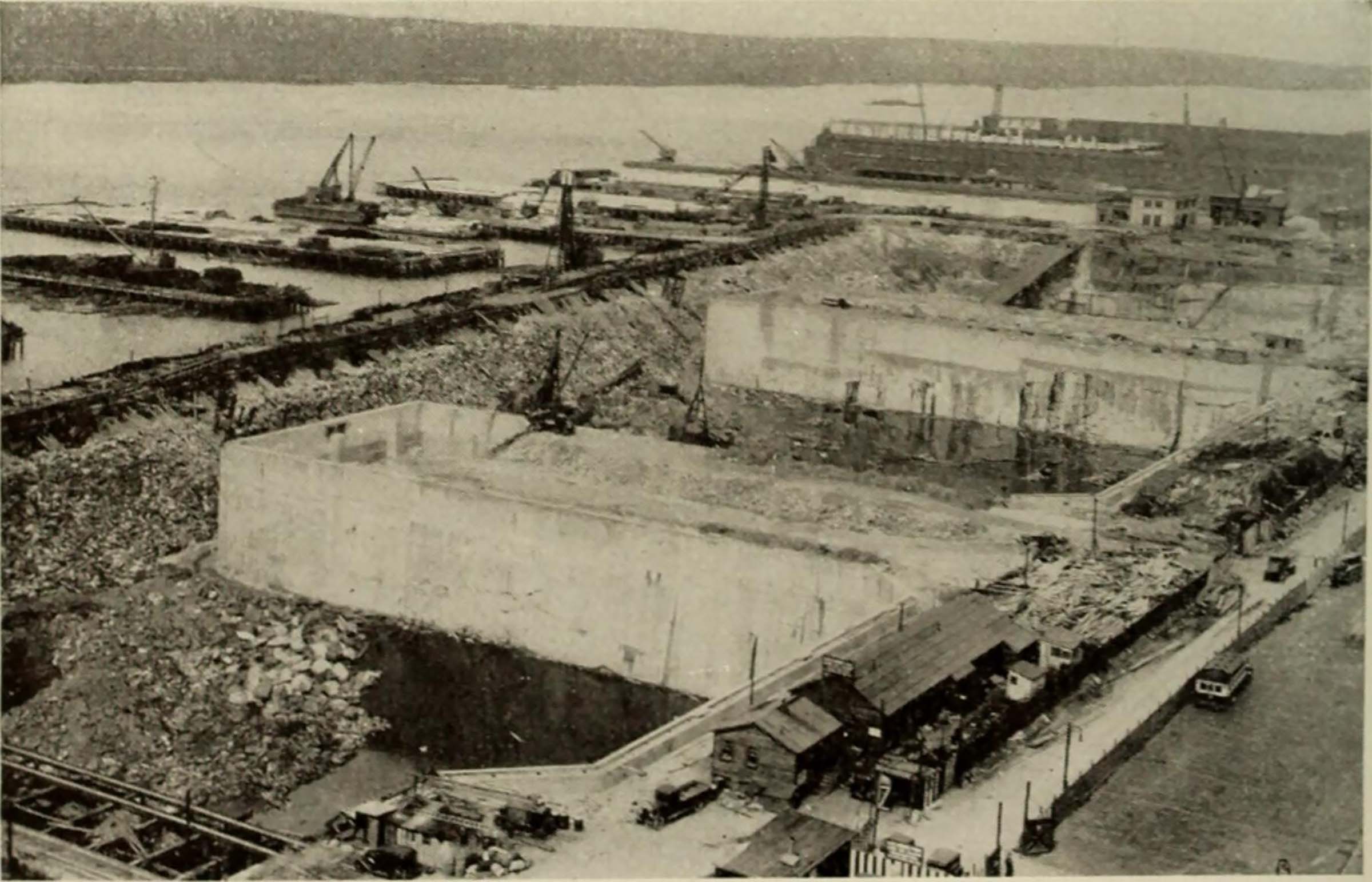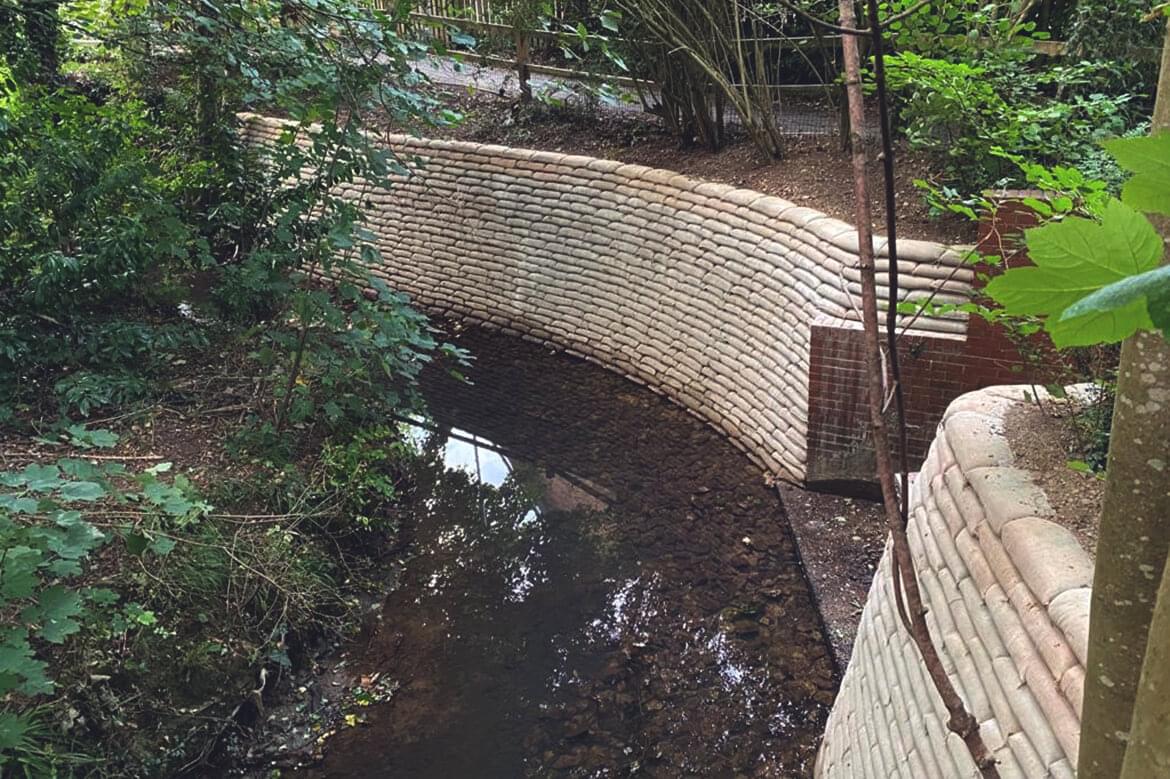Bulkhead on Lake Livingston: A Homeowner’s Checklist Before Construction
Checking Out the Various Usages of Bulkhead Structures in Modern Style
Bulkhead frameworks play a significant duty in contemporary architecture, offering both aesthetic and functional objectives. They can specify rooms, improve storage remedies, and boost illumination. In business setups, they function as centerpieces that reflect brand name identification - Bulkhead on Lake Livingston. Furthermore, their integration frequently sustains sound management and lasting methods. Comprehending the complete extent of their applications discloses much concerning modern style trends and individual experience. What ingenious usages of bulkheads might arise in the future?
Specifying Bulkhead Structures
Bulkhead structures play a vital role in modern design, functioning as vital components in various building styles. These structures are typically specified as elevated systems or ceilings, commonly utilized to hide mechanical systems, circuitry, or plumbing. Bulkheads can be located in both industrial and residential settings, where they give a seamless mix of functionality and appearances. Their design can integrate lights fixtures and other decorative components, enhancing the overall visual charm of an area.
Usually constructed from materials such as drywall, wood, or steel, bulkheads can be customized to fit the architectural design and requirements of the structure (Bulkhead on Lake Livingston). They serve not only to conceal undesirable facilities however also to produce specified zones within open rooms. By handling the circulation of an area, bulkheads add to the spatial company, making them a substantial aspect of contemporary building technique. Their meaning encapsulates both functional and visual measurements.
Functional Applications in Residential Design
Bulkhead frameworks play a necessary function in residential style by promoting space optimization techniques that take full advantage of functional areas. In addition, they contribute aesthetic style aspects that boost the visual appeal of living spaces. On top of that, these structures offer essential architectural assistance remedies, making sure the integrity and safety of the home.
Space Optimization Approaches
As modern household designs significantly focus on efficient use space, ingenious strategies emerge to maximize capability without sacrificing aesthetics. One famous strategy entails the integration of bulkhead structures, which can delineate locations while providing crucial storage space remedies. These structures can be used to develop vertical storage space devices that improve both organization and access. Additionally, multi-functional furnishings, such as exchangeable sofas and collapsible tables, complements bulkhead layouts, permitting spaces to adapt to varying demands. Open flooring strategies additionally optimize spatial flow, urging versatility in usage. Including integrated shelving and recessed lights within bulkheads additionally adds to a streamlined environment, making sure that every square inch of space is used efficiently and harmoniously within the overall style.
Aesthetic Layout Aspects

Architectural Support Solutions
In modern-day property design, a reliable structural assistance remedy is important for preserving the honesty of spaces while maximizing format and capability. Bulkhead frameworks play a substantial function in this circumstance, acting as both assistance and dividing elements. They can conceal mechanical systems, such as plumbing and electrical wiring, while giving reinforcement to the ceiling and floor systems. By tactically placing bulkheads, designers can develop defined locations within open layout, improving functionality without jeopardizing architectural security. In addition, these structures can fit lights components, adding to both appearances and usefulness. To sum up, bulkhead frameworks are crucial in domestic style, using functional assistance options that boost both the capability and aesthetic appeal of living areas.
Enhancing Appearances in Business Spaces
When industrial spaces welcome ingenious bulkhead frameworks, they not just specify physical limits but also considerably enhance the general looks of the environment. These building components offer as aesthetic centerpieces, attracting focus and producing a feeling of intrigue. By incorporating diverse materials such as steel, wood, or glass, bulkheads can reflect a brand name's identification and mission, adding to a natural design.
Additionally, the calculated positioning of bulkheads can manipulate light and shadow, including depth and measurement to otherwise flat spaces. This interplay can change a business area right into an inviting atmosphere, urging consumer interaction. In addition, using shade and appearance in bulkhead design can stimulate details feelings, boosting the general consumer experience. Ultimately, the thoughtful combination of bulkhead frameworks boosts the aesthetic charm of business spaces, making them not only practical yet additionally aesthetically captivating, thereby fostering an enduring impression on visitors.
Acoustic Performance and Audio Management
Efficient acoustic efficiency plays a crucial role in contemporary design, particularly within commercial rooms where audio administration is critical. Bulkhead frameworks can substantially improve acoustic qualities by absorbing sound, decreasing echo, and mitigating sound transfer in between locations. These attributes are particularly advantageous in settings such as workplaces, dining establishments, and theaters, where clear communication and a positive acoustic experience are critical.
The strategic positioning and layout of bulkheads can assist produce sound-buffer areas, successfully isolating noisy locations from quieter ones. Products used in bulkhead building, such as soft coatings and acoustic panels, add to their sound-dampening capacities. Furthermore, the incorporation of bulkheads permits the integration here of sound-absorbing components without endangering visual charm. By addressing acoustic performance, engineers can develop harmonious settings that boost convenience, boost customer experience, and advertise productivity, making bulkheads an important part in the design of modern industrial areas.
Incorporating Bulkheads for Effective Space Use
Although usually ignored, the assimilation of bulkheads in building style can greatly boost room use in modern-day buildings. These structural components offer several functional objectives, offering a way to conceal mechanical systems, electric circuitry, and pipes without endangering aesthetic appeals. By tactically positioning bulkheads, engineers can develop defined areas within open floor strategies, consequently helping with better company and circulation.
Bulkheads can include storage services and lighting features, taking full advantage of the performance of otherwise squandered vertical space. In property settings, they may delineate zones such as kitchen areas or living areas, while in commercial areas, they can enhance the effectiveness of layouts by clearly marking pathways and job locations.
Ultimately, the thoughtful integration of bulkheads contributes to a more organized and visually appealing environment, enabling adaptable areas that can advance with the needs of their residents. This method not only enhances area yet likewise promotes an extra harmonious communication between kind and function.
Bulkheads in Public Architecture

Building Aesthetic Enhancements
While numerous architectural components go for capability, bulkheads in public architecture serve a double objective by improving visual charm. These structures usually produce visual passion through their design, integrating flawlessly with surrounding components. By using different materials, textures, and shades, bulkheads can add to a distinct identification for public spaces, such as airports, museums, and collections. Their strategic placement aids to delineate areas, guiding site visitors while adding depth to the total style. Additionally, bulkheads can emphasize illumination, producing dynamic environments that transform throughout the day. This aesthetic enhancement not just raises the visitor experience yet also cultivates a local color, making bulkheads a crucial consideration in modern-day public architecture. Overall, bulkheads embody the fusion of kind and function.

Architectural Support Solutions
As engineers seek ingenious ways to enhance the structural stability of public areas, bulkheads become essential parts in the layout and construction process. These structures supply crucial support, especially in areas subject to hefty foot website traffic or vibrant tons. By distributing weight evenly, bulkheads help prevent architectural failure while permitting flexible layout alternatives. In large locations, such as arenas and convention centers, bulkheads are typically integrated into the total architectural framework, making sure stability and security. Furthermore, they can assist in the unification of energies and mechanical systems, contributing to the performance of area usage. Inevitably, bulkheads represent a vital service in modern-day public architecture, reinforcing both functionality and security in community-focused settings.
Environmental Security Measures
Including environmental defense procedures into public architecture has become significantly important as city designers focus on sustainability together with architectural support. Bulkhead frameworks serve a twin function in this respect, serving as obstacles against erosion and flooding while at the same time boosting the visual charm of city landscapes. Their style typically consists This Site of natural environments such as plants, which can enhance air top quality and provide environments for wildlife. Additionally, bulkheads can be engineered with permeable products that allow for water absorption, lowering overflow and advertising groundwater recharge. This integration of eco-friendly factors to consider not just preserves the atmosphere but likewise fosters neighborhood durability versus environment modification. By using bulkheads efficiently, designers add to lasting urban development that aligns with contemporary ecological goals.
Future Fads in Bulkhead Design
Arising patterns in bulkhead layout show a growing focus on sustainability, innovation, and capability in modern style. Designers are significantly integrating environment-friendly products, such as recycled composites and bioplastics, to minimize ecological effect. In addition, the assimilation of wise modern technology is ending up being widespread, allowing bulkheads to serve multi-functional functions, including power storage and climate control.
In city setups, modular bulkhead original site systems are getting traction, providing flexibility in style and simplicity of installment. These systems can be adjusted to numerous landscapes, enabling efficient space usage. In addition, aesthetic factors to consider are developing; bulkheads are now being created to enhance visual allure, typically incorporating imaginative components that resonate with regional culture.
As climate resilience comes to be a top priority, future bulkhead designs will likely focus on flooding defense and stormwater management, making sure structural stability while resolving ecological difficulties. This change represents a holistic technique to design that meets both human needs and eco-friendly obligations.
Often Asked Inquiries
What Materials Are Generally Used for Bulkhead Building And Construction?
Typical products for bulkhead building and construction include concrete, steel, wood, and composite materials. These choices give toughness, architectural integrity, and resistance to ecological aspects, making them suitable for numerous applications in construction and engineering jobs.
Exactly How Do Bulkheads Impact Building Energy Performance?
Bulkheads boost constructing energy efficiency by supplying thermal insulation and minimizing air leak (Bulkhead on Lake Livingston). They aid keep indoor temperature levels, therefore lowering home heating and cooling down needs, ultimately causing lower power prices and improved ecological sustainability
Exist Any Type Of Building Regulations Details to Bulkhead Structures?
Yes, developing codes certain to bulkhead frameworks exist, varying by place. These laws typically deal with safety, structural stability, and accessibility, ensuring that bulkheads meet required standards for construction and design within an offered territory.
Can Bulkheads Be Easily Modified or Gotten Rid Of Later?
Bulkheads can commonly be changed or removed, depending upon their style and construction. However, such changes may need mindful preparation and adherence to structure codes to assure architectural stability and security are preserved throughout the process.
What Are the Prices Related To Mounting Bulkhead Structures?
The costs related to setting up bulkhead frameworks can vary substantially, typically influenced by products, design complexity, and labor. Usually, expenses vary from moderate to high, depending upon the project's specific requirements and place.
Bulkhead structures play a crucial duty in modern-day design, serving as vital parts in numerous building layouts. Bulkhead structures play a vital function in household design by helping with area optimization strategies that make the most of usable areas. Usually neglected, the integration of bulkheads in architectural style can substantially improve area application in contemporary structures. As engineers look for ingenious means to boost the structural honesty of public spaces, bulkheads arise as vital parts in the style and building and construction process. The costs connected with installing bulkhead structures can differ substantially, normally influenced by products, design intricacy, and labor.